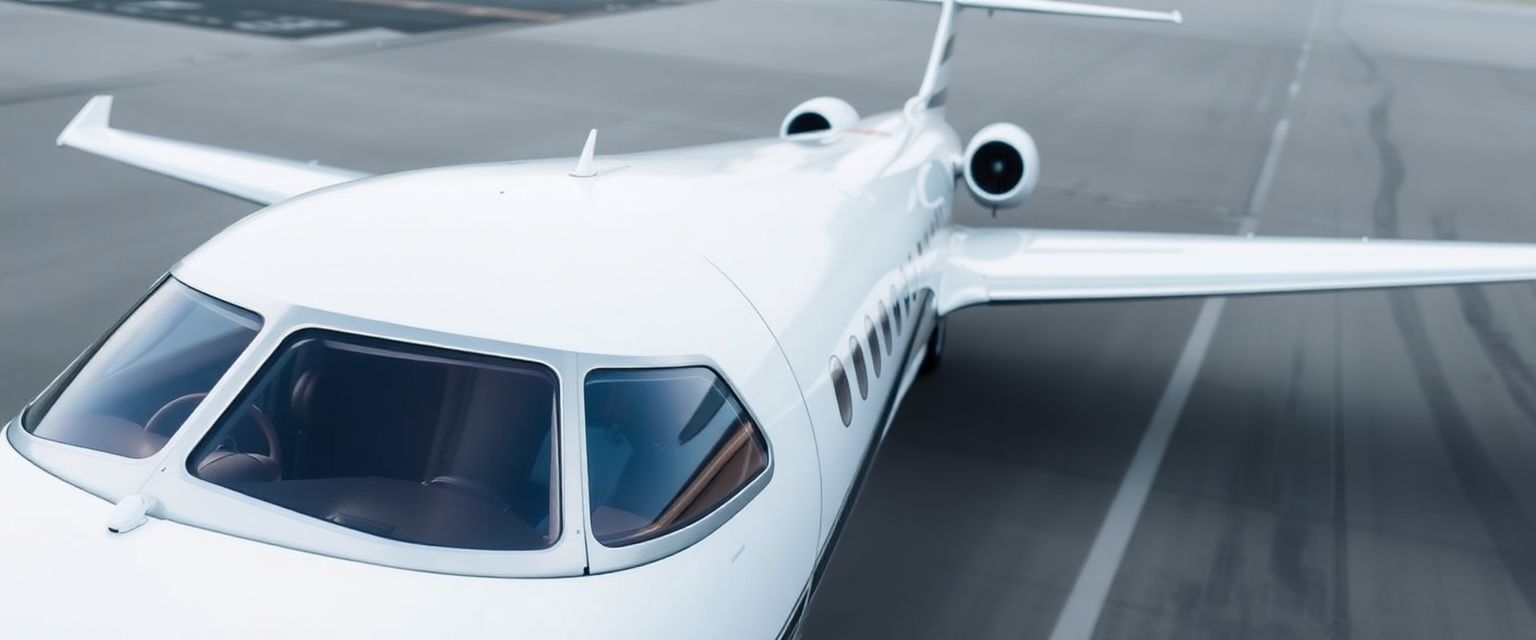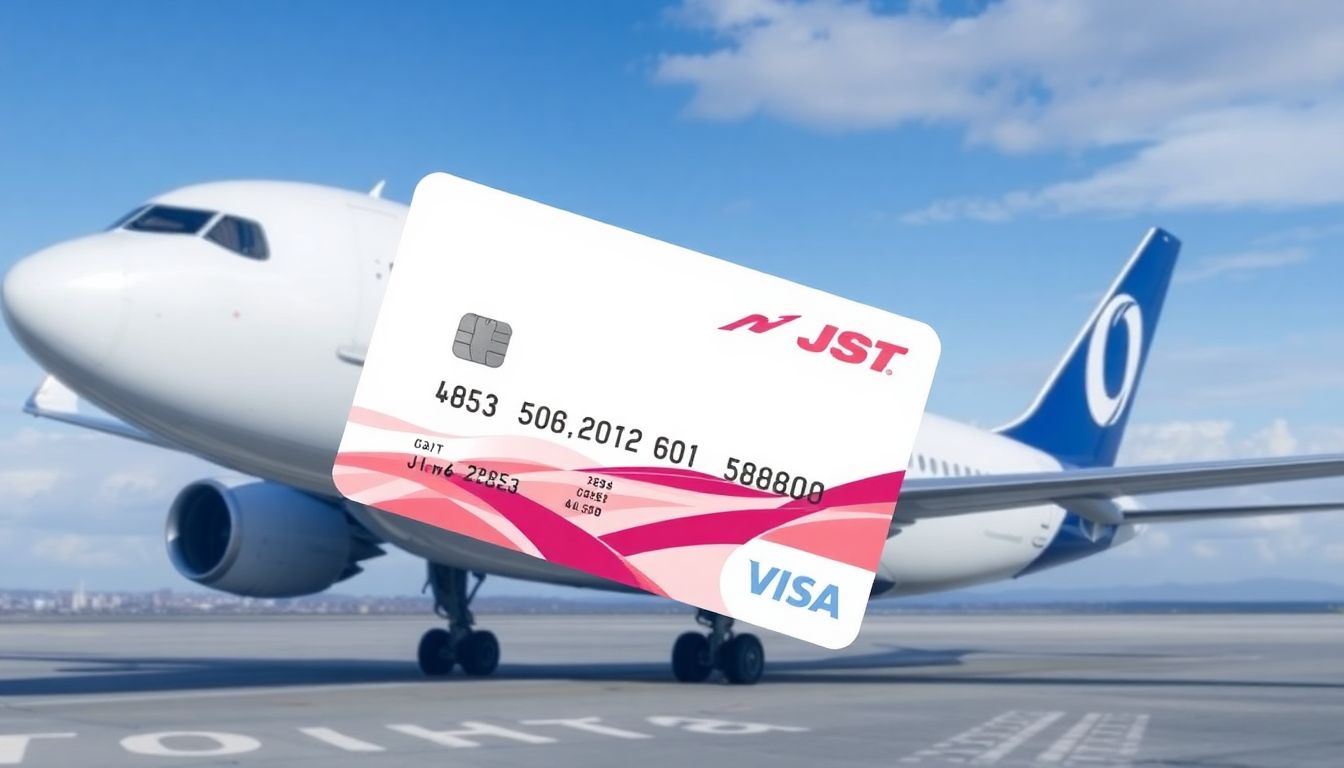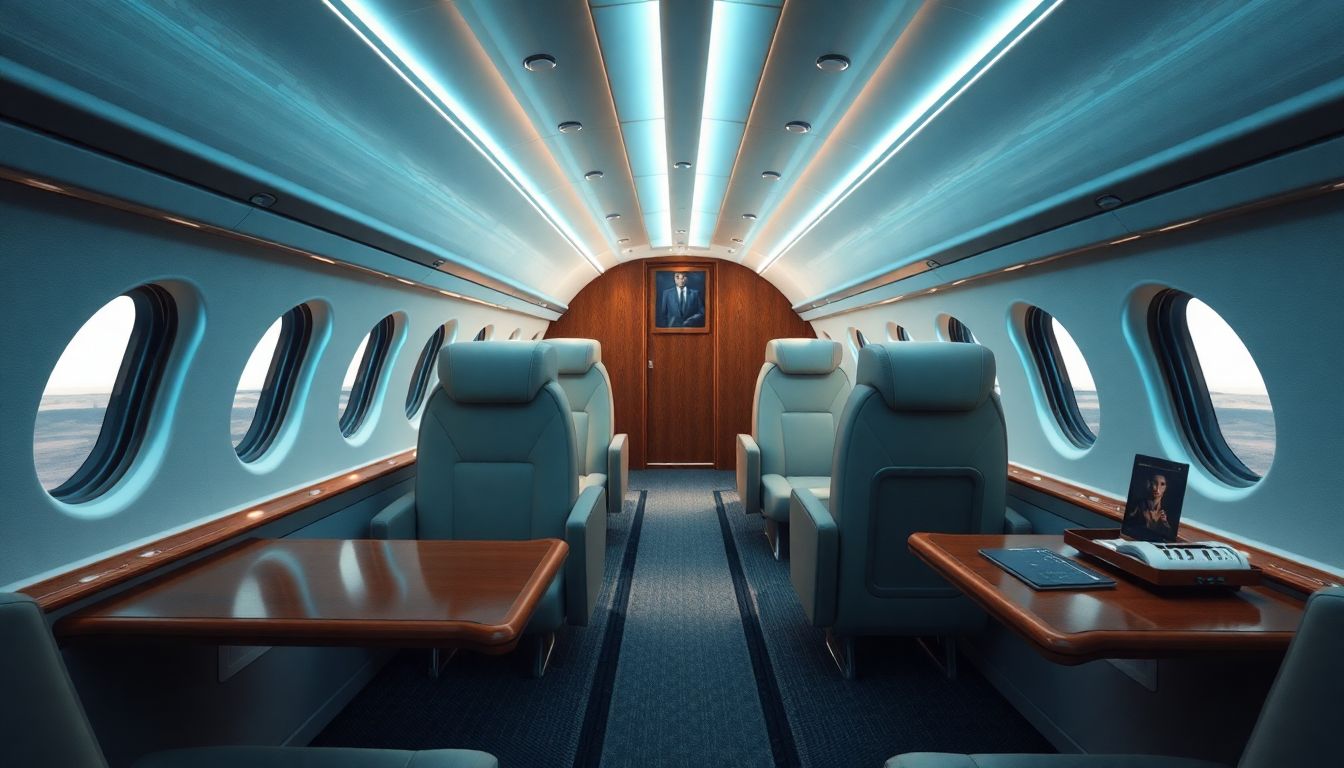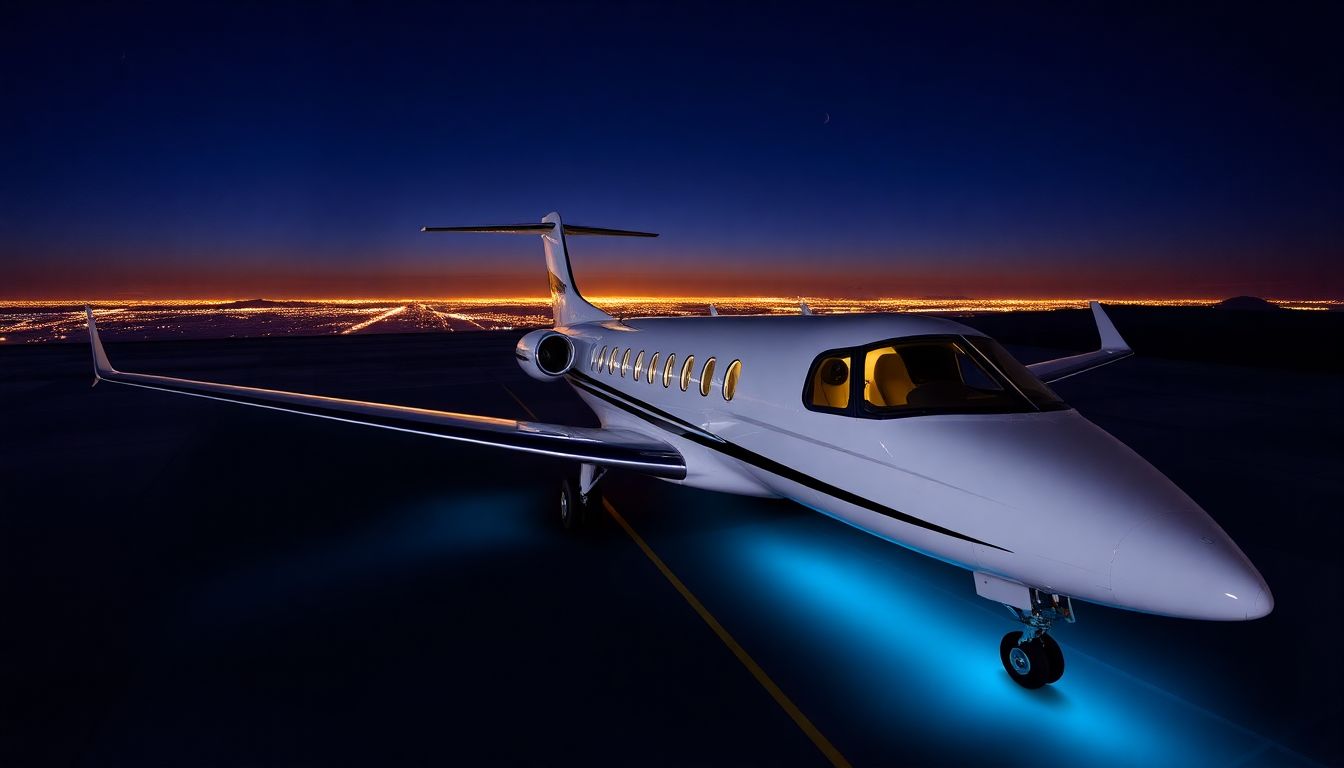Simplify Your Travel Experience
Private jet travel has long been associated with the ultra-wealthy and corporate elite. However, private jet card memberships have emerged as a more accessible and flexible option for those seeking the luxury and convenience of private air travel without the hefty price tag of full ownership.
Understanding Private Jet Card Memberships
A private jet card membership is a program that helps people or businesses to purchase a set number of flight hours or a specific dollar amount of air travel in advance. This pre-purchased time or funds can then be used to book private jet flights as needed, typically with short notice and without the long-term commitment of fractional jet ownership or the variability of charter prices.
The concept operates similarly to a debit card for air travel. You deposit funds or purchase hours upfront, and then draw from that balance as you fly.
This model offers a middle ground between the flexibility of charter flights and the consistency of ownership, making it an attractive option for frequent flyers who value both convenience and cost-effectiveness.
Key Benefits of Jet Card Memberships
Simplicity and Convenience
One of the primary advantages of jet card memberships is the simplicity they bring to private air travel. Instead of negotiating prices for each flight or dealing with the complexities of ownership, members can simply call or use an app to book their flight, often with as little as 24 hours notice.
Predictable Pricing
Jet cards typically offer fixed hourly rates, which can make budgeting for travel more predictable. This is especially useful during peak travel times when charter prices can fluctuate significantly.
By locking in a set rate, members can avoid unexpected price hikes and plan their travel expenses more accurately.
Guaranteed Availability
Many jet card programs guarantee aircraft availability, ensuring that members have access to a suitable jet when they need it, even during busy periods. This level of assurance is particularly valuable for business travelers or those with time-sensitive schedules.
Personalized Service
Jet card memberships often come with a high level of personalized service. Many providers offer dedicated concierge services, handling everything from in-flight catering to ground transportation.
This white-glove treatment extends the luxury experience beyond just the flight itself, creating a seamless door-to-door travel experience.
Flexibility in Aircraft Selection
Depending on the program, members may have access to a range of aircraft types, from light jets for short trips to large-cabin aircraft for intercontinental travel. This flexibility allows travelers to choose the most suitable aircraft for each journey, optimizing both comfort and cost-efficiency.
Choosing the Right Jet Card Program
With the increasing popularity of jet cards, the market has become saturated with options, each with it’s own unique features and benefits. When selecting a program, it’s crucial to consider several factors:
Flight Hours vs. Dollar Amount
Some programs sell memberships based on a set number of flight hours, while others operate on a deposit system where you purchase a dollar amount of travel. The choice between these often depends on your travel patterns and preferences.
For those who often fly similar routes, a flight hour program might be more useful. These programs typically offer a set number of hours on a specific aircraft type or category, which can be ideal if your travel needs are consistent.
On the other hand, if your travel needs vary widely in terms of distance and aircraft type, a dollar-based program could offer more flexibility. These programs allow you to use your deposited funds across different aircraft types and routes, potentially providing better value for people who have diverse travel requirements.
Aircraft Types and Sizes
Different programs offer access to various aircraft types, from light jets suitable for short trips to large-cabin aircraft for intercontinental travel. Consider your typical routes and passenger counts when evaluating these options.
If you primarily fly short distances with a small group, a light jet program might be enough. These aircraft are cost-effective for trips under three hours and typically seat 6-8 passengers comfortably.
However, if you often travel with larger groups or need to cross oceans, you’ll want a program that offers access to larger aircraft. Midsize jets can handle longer domestic flights and seat up to 10 passengers, while heavy jets and ultra-long-range aircraft are suitable for intercontinental travel and can accommodate 12-19 passengers.
Geographical Coverage
If you often travel internationally, confirm that your chosen program offers global coverage. Some jet cards are limited to specific regions or countries.
It’s essential to confirm that the program’s coverage aligns with your travel needs, whether that’s domestic, continental, or worldwide.
For example, some programs might specialize in North American travel, while others offer extensive coverage in Europe or Asia. If you frequently travel to many continents, look for a program with truly global reach and the ability to arrange flights worldwide.
Peak Day Policies
Many programs have blackout dates or increased rates during high-demand periods. Understanding these policies is crucial if you often travel during holidays or other busy times.
Some programs may need longer notice periods for peak day travel or charge premium rates. Be sure to review these policies carefully to avoid surprises.
If you frequently travel during popular times like major holidays or events, look for a program with more flexible peak day policies or one that offers guaranteed availability even during these periods.
Additional Fees and Surcharges
Be aware of any extra costs beyond the base hourly rate, such as fuel surcharges, de-icing fees, or overnight charges for the crew. These can add up quickly and significantly impact the overall cost of your membership.
Look for programs that offer transparent pricing and clearly outline all potential extra charges. Some programs include these fees in their base rate, while others charge them separately.
Understanding the full cost structure will help you make a more accurate comparison between different jet card options.
The Economics of Jet Card Memberships
While private jet travel is undoubtedly a luxury, jet card memberships can offer significant cost savings compared to traditional charter or ownership models, especially for those who fly between 25 and 200 hours per year. The fixed hourly rates offered by most jet cards can result in substantial savings during peak travel times when charter prices surge.
Additionally, the ability to choose the suitable aircraft size for each trip can lead to cost efficiencies that aren’t always possible with fractional ownership or full ownership models. For example, if you typically fly with just a few passengers, you can opt for a smaller, more economical aircraft as opposed to being tied to a larger jet that you own or partially own.
However, jet card memberships still represent a significant investment. Entry-level programs often start at around 25 hours or $100,000, with rates varying depending on the aircraft size and program features.
It’s essential to carefully consider your travel needs and budget when evaluating the economics of a jet card membership.
To decide if a jet card makes financial sense for you, consider the following:
- Calculate your annual private flight hours
- Compare the all-in costs of jet card membership to charter rates for your typical routes
- Factor in the value of guaranteed availability and fixed pricing
- Consider the opportunity cost of tying up funds in a jet card vs. other investments
Remember that while jet cards can offer savings over charter flights, they’re still more expensive than first-class commercial travel. The value proposition comes from the time savings, convenience, and luxury experience that private aviation provides.
Membership Tiers and Customization
Many jet card providers offer different membership tiers to cater to varying needs and budgets. These tiers may differ in terms of aircraft access, notice periods, and extra perks.
Some programs even allow for customization, letting members tailor their membership to their specific requirements.
For example, a basic tier might offer access to light jets with a 48-hour notice period, while a premium tier could provide access to large-cabin aircraft with as little as 6 hours notice. Some providers also offer specialized memberships for corporate clients or families, with features designed to meet their unique needs.
Corporate Memberships
Corporate jet card programs often include features like:
- Multiple authorized users
- Ability to fly many aircraft simultaneously
- Customized reporting for expense tracking
- Integration with corporate travel policies
Family Memberships
Family-oriented programs might offer:
- Flexible cancellation policies to accommodate changing schedules
- Child-friendly catering options
- Special arrangements for pets
- Multi-generational travel planning assistance
When evaluating membership tiers, consider not just the price difference and the added value each tier provides. Sometimes, paying for a higher tier can result in significant benefits that justify the extra cost, especially if you’re a frequent flyer or have specific travel requirements.
Safety Standards and Crew Experience
Safety should always be a top priority when considering private air travel. Reputable jet card providers adhere to strict safety standards and often exceed FAA requirements.
When evaluating programs, inquire about their safety ratings, pilot experience requirements, and aircraft maintenance protocols.
Many top-tier providers need their pilots to have thousands of hours of flight experience and undergo regular training and evaluations. They also typically use third-party safety auditors to confirm their operations meet the highest standards in the industry.
Key safety factors to consider include:
Pilot Qualifications
Look for programs that need pilots to have significant flight experience, typically measured in thousands of hours. Many top providers need captains to have at least 3,000-5,000 hours of total flight time and significant experience in the specific aircraft type they’re flying.
Crew Training
Inquire about the frequency and type of training pilots and crew members undergo. The best programs need regular simulator training, emergency procedure reviews, and ongoing education to keep skills sharp.
Aircraft Maintenance
Ask about the maintenance schedules and standards for the aircraft in the program’s fleet. Many providers follow manufacturer-recommended maintenance schedules or even more stringent protocols to confirm aircraft are always in top condition.
Safety Ratings
Look for providers that have achieved high ratings from third-party safety auditors like ARG/US, Wyvern, or IS-BAO. These organizations conduct thorough reviews of an operator’s safety practices and provide ratings that can help you assess the provider’s commitment to safety.
Emergency Response Plans
Inquire about the provider’s emergency response capabilities. Top-tier operators have comprehensive plans in place to handle any situation that may arise during a flight.
Remember, while convenience and luxury are important, they should never come at the expense of safety. A reputable jet card provider should be transparent about their safety practices and eager to talk about them with potential members.
In-Flight Amenities and Personalization
One of the joys of private jet travel is the ability to customize your in-flight experience. Many jet card programs offer a range of amenities and personalization options to enhance your progress.
Gourmet Catering
High-end jet card programs often partner with renowned catering companies to offer a wide range of dining options. From simple snacks to multi-course gourmet meals, you can usually customize your in-flight dining experience to your preferences.
Some programs even allow you to order from specific restaurants at your departure or arrival cities.
Most modern private jets are equipped with high-speed Wi-Fi and advanced entertainment systems. When choosing a program, inquire about the connectivity options available on their fleet and any associated costs.
Customized Cabin Configurations
Depending on the aircraft type, you may have options to customize the cabin layout for your needs. This could include converting seats into beds for overnight flights, setting up a conference table for business meetings, or arranging a more social seating configuration for family trips.
Pet-Friendly Policies
For many, the ability to travel with pets is a significant advantage of private aviation. Most jet card programs are pet-friendly, but it’s worth confirming any specific policies or restrictions.
Some programs may offer special amenities for pets, such as dedicated pet beds or special meals.
Special Accommodations
Whether you’re traveling with young children, elderly passengers, or have specific medical needs, many jet card programs can accommodate special asks. This might include providing car seats, wheelchair accessibility, or even arranging for medical equipment on board.
When choosing a program, consider which amenities are most important to you and confirm that your chosen provider can meet these needs. Remember that while many amenities are included in your membership, some may incur extra fees, so it’s important to clarify these details upfront.
Booking Process and Technology Integration
The ease of booking is a significant advantage of jet card memberships. Many providers now offer user-friendly mobile apps or online portals where members can book flights, track their usage, and manage their account.
Some even use artificial intelligence to improve routing and pricing.
Mobile Apps and Online Portals
Look for programs that offer intuitive, feature-rich mobile apps or web portals. These should allow you to:
- Book flights quickly and easily
- View real-time aircraft availability
- Track your flight hours or account balance
- Access important documents like invoices or flight manifests
- Communicate with your dedicated concierge or customer service team
AI and Machine Learning Integration
Some cutting-edge providers are leveraging artificial intelligence and machine learning to enhance the booking experience. These technologies can:
- Optimize flight routing for efficiency and cost-effectiveness
- Predict and mitigate potential weather-related disruptions
- Provide dynamic pricing based on real-time market conditions
- Offer personalized recommendations based on your travel history
Real-Time Flight Tracking
Many programs now offer real-time flight tracking for both members and their ground support teams. This can be particularly useful for coordinating ground transportation or keeping family members informed of your travel progress.
Integration with Other Travel Services
Some jet card programs offer integration with other luxury travel services, such as high-end hotel bookings, car rentals, or even yacht charters. This can create a seamless end-to-end travel experience managed through a single platform.
When evaluating programs, consider the booking process and the technology available to members. A streamlined, tech-savvy approach can greatly enhance the overall experience and make managing your private jet travel more convenient.
However, also confirm that human support is readily available when needed, as personal assistance can be crucial in complex travel situations.
Flexibility and Cancellation Policies
Life can be unpredictable, and travel plans often change. It’s important to understand a program’s flexibility in terms of booking changes and cancellations.
Some programs offer very generous cancellation policies, allowing members to change or cancel flights with minimal notice and no penalties.
Others may have stricter policies, especially for peak travel days.
Key Factors to Consider:
- Cancellation Windows: How much notice is required to cancel a flight without penalty?
This can range from as little as 4 hours to as much as 72 hours before the scheduled departure.
- Change Fees: Are there fees associated with changing your flight details, such as departure time or destination?
- Peak Day Policies: Many programs have stricter cancellation policies for peak travel days.
Understand how these differ from standard days.
- Refund Options: If you cancel a flight, do you receive a full refund of your hours or funds, or are there penalties?
- Flexibility in Aircraft Size: Can you easily switch to a larger or smaller aircraft if your needs change?
- Upgrade and Downgrade Policies: If you need to switch to a different aircraft category, what are the policies and potential fees?
- Short-Notice Bookings: How close to your desired departure time can you book a flight?
Look for programs that offer the level of flexibility that aligns with your lifestyle and travel patterns. If your schedule is often in flux, a program with lenient cancellation policies might be worth the potential premium.
However, if your travel plans are typically stable, you might be able to save money with a program that has slightly stricter policies.
Remember, flexibility often comes at a cost. Programs with very generous cancellation policies may have higher hourly rates or membership fees to offset the risk of last-minute changes.
Weigh the value of flexibility against the overall cost of the program to find the right balance for your needs.
The Future of Jet Card Memberships
As the private aviation industry continues to evolve, jet card memberships are adapting to meet changing consumer demands. We’re seeing several trends that are likely to shape the future of these programs:
Increased Flexibility
There’s a growing trend towards more flexible programs with shorter commitment periods and lower entry points, making private jet travel accessible to a broader audience. Some providers are offering “light” versions of their jet cards with lower least hour commitments or deposit amounts.
Technology-Driven Innovations
Technology is playing an increasingly important role in the private aviation sector. We can expect to see more advanced mobile apps and online platforms that offer features like:
- Real-time pricing and availability
- AI-powered route optimization
- Virtual reality cabin tours
- Blockchain-based booking and payment systems
Sustainability Initiatives
As environmental concerns become more pressing, we can expect to see more emphasis on eco-friendly options in the private aviation sector. Some jet card providers are already offering carbon offset programs or investing in sustainable aviation fuel initiatives.
In the future, we might see:
- Greater use of biofuels and electric aircraft
- More effective routing algorithms to reduce fuel consumption
- Partnerships with environmental organizations for large-scale offset projects
Personalization and Data Analytics
As providers collect more data on member preferences and travel patterns, we’ll likely see increased personalization of services. This could include:
- AI-driven recommendations for routes, aircraft, and in-flight services
- Customized membership tiers based on individual usage patterns
- Predictive maintenance to reduce aircraft downtime and improve reliability
Integration with Other Luxury Services
We may see jet card memberships becoming part of broader luxury lifestyle packages, integrating with high-end hotel chains, exclusive clubs, and other premium services to offer a more comprehensive travel and lifestyle solution.
Fractional-Style Options
Some providers might start offering hybrid models that mix elements of jet cards and fractional ownership, providing more long-term stability in aircraft access while maintaining some of the flexibility of jet cards.
Enhanced Safety Measures
In the wake of global health concerns, we can expect continued emphasis on health and safety measures, potentially including:
- Advanced air filtration systems
- Regular disinfection protocols
- Health screening for crew members
- Partnerships with health organizations for emergency response planning
As the industry continues to innovate, jet card memberships are likely to become even more tailored to individual needs, leveraging technology and data to provide a seamless, personalized private aviation experience.
Key Takeaways
- Private jet card memberships offer a flexible and potentially cost-effective way to access private air travel.
- Benefits include simplified booking, fixed hourly rates, guaranteed availability, and personalized service.
- When choosing a program, consider factors such as flight hours vs. dollar amount, aircraft types, geographical coverage, and extra fees.
- Safety standards, crew experience, and in-flight amenities are crucial considerations.
- The future of jet card memberships is likely to involve increased flexibility, technological integration, and a focus on sustainability.
People Also Asked
What is the average cost of a jet card membership?
Jet card membership costs vary widely depending on the provider, aircraft type, and included services. Entry-level programs typically start around $100,000 or 25 flight hours, with prices increasing for larger aircraft or more premium services.
How much notice do I need to give to book a flight with a jet card?
Most jet card programs need 24-48 hours’ notice for booking a flight. However, some premium programs offer shorter booking windows, sometimes as little as 4-6 hours before departure.
Can I choose different types of aircraft with a jet card?
Many jet card programs offer access to many aircraft types. Some allow you to switch between categories, while others may need separate cards for different aircraft sizes.
Are jet cards cheaper than chartering private jets?
Jet cards can be more cost-effective than chartering for frequent flyers, especially during peak travel times when charter prices surge. However, this depends on your specific travel patterns and the terms of the jet card program.
Do jet card memberships expire?
Most jet card memberships have an expiration date, typically 12-24 months from purchase. Some programs offer the option to roll over unused hours or funds to a new membership period.
Can I share my jet card membership with others?
Many programs allow you to authorize other users on your account, such as family members or business associates. Some offer specific family or corporate membership options designed for shared use.
What happens if my preferred aircraft isn’t available?
Most jet card programs guarantee availability, even if your preferred aircraft type isn’t available. In such cases, they typically provide an upgrade to a larger aircraft at no extra cost.
Are there any hidden fees with jet card memberships?
While reputable providers aim for transparency, it’s important to carefully review the terms for potential extra costs such as fuel surcharges, de-icing fees, or catering charges.
Can I use my jet card for international travel?
Many jet card programs offer international travel options, but coverage areas can vary. Be sure to check the geographical limitations of any program you’re considering.
How do jet card memberships compare to fractional jet ownership?
Jet cards typically offer more flexibility and lower upfront costs compared to fractional ownership, making them suitable for those flying 25-200 hours per year. Fractional ownership may be more cost-effective for individuals or businesses that require frequent private jet travel but want to avoid the full costs of owning and maintaining an aircraft.







